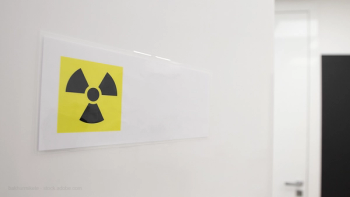
Analysis Finds Brukinsa May Provide Costs Savings Over Imbruvica in CLL
In a statistical analysis, Brukinsa resulted in fewer cases of disease progression or death and resulted in lower overall healthcare costs than Imbruvica in patients with chronic lymphocytic leukemia.
The use of Brukinsa (zanubrutinib) instead of Imbruvica (ibrutinib) as a second-line treatment for patients with chronic lymphocytic leukemia could potentially lead to fewer adverse events and result in fewer healthcare costs, according to new analysis. This analysis, using a number-needed-to-treat (NNT) modeling method, estimated that approximately 13 of 100 patients would avoid disease progression or death over 24 months, saving about $4.7 million.
Developed by BeiGene, Brukinsa is a small molecule inhibitor of Bruton’s tyrosine kinase (BTK). BTK is an important enzyme in the B-cell receptor signaling pathway, regulating cell proliferation and cell survival in various B-cell malignancies. It is approved for several types of lymphoma: mantle cell lymphoma, chronic lymphocytic leukemia/small lymphocytic lymphoma, marginal zone lymphoma, follicular lymphoma and Waldenström’s macroglobulinemia, a rare type of non-Hodgkin lymphoma.
In the analysis recently
In this BeiGene-sponsored economic analysis of Brukinsa and Imbruvica, researchers conducted a base-case analysis, which looks at the most likely set of assumptions about a given situation to arrive at the most likely outcome.
Researchers wanted to find out how many people would need to be treated over three time points — 12, 24 and 36 months — for one patient to have an event such as progression of disease or death for Brukinsa compared with Imbruvica. They analyzed the endpoint used from the
Researchers from the JMCP study used progression-free survival between the treatment group and the control group to determine an absolute risk reduction, which is necessary for the analysis of the number needed to treat.
Based on a hypothetical scenario of a clinical practice of 100 patients treated with Brukinsa instead of ibrutinib, the model estimated that approximately 13 patients would avoid disease progression or death over 24 months. The model estimated that for every 8 patients treated with Brukinsa, 1 event of progression or death was avoided compared with using ibrutinib.
Researchers assumed a payer mix of 40% commercial and 60% Medicare, similar to the patient population in the study. Researchers used drug costs from the 2024 RED Book, which were $15,066.00 for a 30-day supply of Brukinsa and $16,391.63 for a 30-day supply of Imbruvica. Adverse event-related costs were estimated to be $6,685 for Brukinsa and $6,812 for Imbruvica.
Based on this analysis, the total costs per patient treated with Brukinsa were $399,928, and costs for Imbruvica were $447,059. The clinical practice in this scenario could potentially realize a substantial cost savings of $4.7 million over 24 months, and cost savings are projected to increase to $5.8 million over 36 months.
One limitation, the researchers said, was that the ALPINE study did not have data on medical resource utilization, and medical resource information was not available. Researchers instead used two previous studies — one published in
Newsletter
Get the latest industry news, event updates, and more from Managed healthcare Executive.




















































